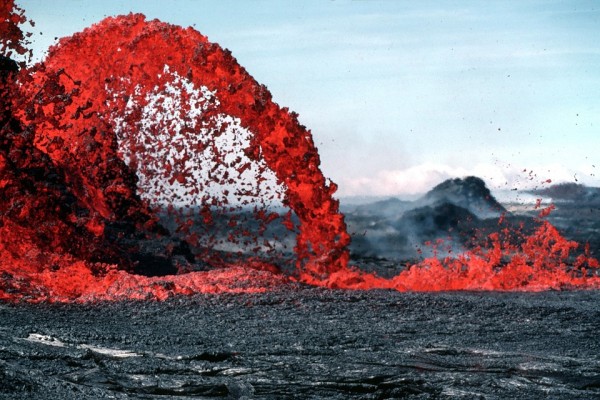By Ana Verayo, | March 08, 2016

Is it possible to outrun an erupting supervolcano?
Scientists reveal new evidence based on an ancient eruption that it is apparently possible to outrun a supervolcano. According to volcanologist and co-author of the study, Greg Valentine from the University of Buffalo in New York, it is not recommended to outrun a volcano but there are a few people who could.
Like Us on Facebook
Valentine and his team analyzed volcanic rocks that were trapped in ash, revealing that a lethal ash flow can travel 10 to 45 miles per hour, on the street. This can be outrun on foot however, this kind of pace is challenging to sustain, but a car can certainly outdo this.
According to Valentine, violent volcanic eruptions can produce slow moving flows, which can devastate an area but they are still considered as slow, concentrated and super dense. Most experts agree that the safest way to escape an erupting volcano is by getting as far away as you can, which can prevent a lot of deaths that are commonly associated with volcanoes.
The most common way of dying from a volcano is suffocating from a deluge of ash, super hot rocks and burning gas that can explode at speeds of 300 miles per hour. These pyroclastic flows are usually the real threat here and not the lava.
The last super eruption on the planet was about 74,000 years ago in Toba, Indonesia as volcanologists are now investigating ancient volcanic rocks to decipher how supervolcanoes erupt, and determine the hazards of these eruptions in the event of a future volcanic disaster.
The last supervolcano eruption in North America occurred some 18.8 million years ago in Arizona, as the ash spread out over 100 miles. This layer of ancient solidified ash known as a tuff, formed into a single layer now called the Peach Springs Tuff, measuring 450 feet thick and about 10 feet thick at the edges, which is located near the volcano some 100 miles away.
Researchers measured these rocks at the bottom part of the tuff in Arizona that were carried away in the flow. They traced back the rocks to their source and discovered that these various sized rocks were transported not that far away.
When scientists analyzed this rock and flow movement, they developed a model that determined how fast and thick this ash flow was when it was travelling. Their findings revealed that a dense, slow moving pyroclastic flow can suck these rocks from the surface and drag them along. A thin, faster flow cannot possibly reach speeds up to 1,454 miles, which is needed to carry these rocks.
Peach Springs Tuff originally comes from the Black Mountains of southwest Arizona near the town of Oatman. This supervolcano eruption left a massive crater or a caldera however, it is now almost destroyed by erosion and fault lines.
This caldera is now known as Silver Creek, which released magma for several days, of an estimated volume of 1,000 times the daily flow of the Mississippi River, says Valentine. This new study is published in the journal Nature Communications.
-
Use of Coronavirus Pandemic Drones Raises Privacy Concerns: Drones Spread Fear, Local Officials Say

-
Coronavirus Hampers The Delivery Of Lockheed Martin F-35 Stealth Fighters For 2020

-
Instagram Speeds Up Plans to Add Account Memorialization Feature Due to COVID-19 Deaths

-
NASA: Perseverance Plans to Bring 'Mars Rock' to Earth in 2031

-
600 Dead And 3,000 In The Hospital as Iranians Believed Drinking High-Concentrations of Alcohol Can Cure The Coronavirus

-
600 Dead And 3,000 In The Hospital as Iranians Believed Drinking High-Concentrations of Alcohol Can Cure The Coronavirus

-
COVID-19: Doctors, Nurses Use Virtual Reality to Learn New Skills in Treating Coronavirus Patients







